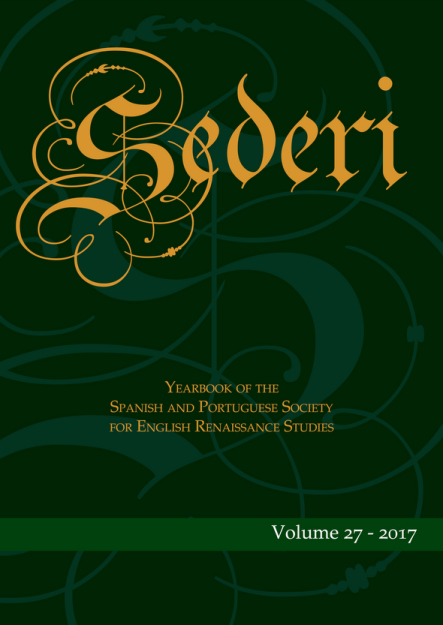Shakespeare our contemporary in 2016: Margaret Atwood’s rewriting of The Tempest in Hag-Seed
Resumen
Margaret Atwood’s novel Hag-Seed (2016) is a retelling of The Tempest that transfers the actions from the magic island of the original play to presentday Canada: the avant-garde artistic director of a Shakespearean Festival is ousted from his job by his more world-savvy deputy, lives in isolation for twelve years and plots his revenge, which will involve a staging of The Tempest at the local prison where he has been teaching for some time as Mr Duke. Hag-Seed is part of a larger project of fictional retellings of the Bard’s plays conceived by Hogarth Press for the commemoration of the 400th anniversary of his death, a moment when Shakespeare’s cultural capital seems to be circulating more energetically than ever. The present article analyses Hag-Seed as a neo-Shakespearean novel that is original in the double sense of the term that Atwood’s teacher Northrop Frye so frequently remarked: imaginative, innovative, and inventive but also true to its fountain and origins.
Descargas
Descargas
Número
Sección
Licencia
The copyright holder of the published contributions is SEDERI.The hardcopy and an open-access version of the journal will be published simultaneously. The issues will be available online in the SEDERI website (http://www.sederi.org/yearbook/) and other repositories that have signed an agreement with SEDERI.
The authors who publish with this journal agree to the following terms:
a) SEDERI retains copyright of the essay.
b) If the author wishes to republish or rewrite the essay for another journal, or include the essay published in SEDERI in their personal repositories, or in any other way, they should contact the editors to obtain permission to do so. This will entail citing SEDERI as the original source and sending the editors a copy of the new version, or the link to the website, in case of online publishing.
The author(s) hereby warrant(s) that:
a) The essay submitted for publication is an original creation and does not infringe any copyright or property right of another journal, author or publisher.
b) The essay submitted for publication has not been previously published, whole or in part, and is not being considered for publication elsewhere.
c) Written permission has been obtained for any material from other sources included in the essay submitted for publication.




